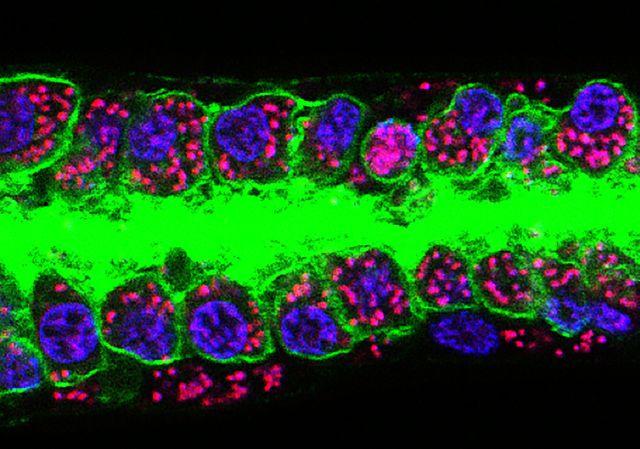
In 2017, more than 1,100 science educators took part in HHMI BioInteractive workshops in Spanish. Now the
provider of free educational resources has launched a Spanish version of its website that is appropriate for biology and earth science educators and students at the secondary and college levels.
The new site broadens access to a collection of Spanish-language resources including short documentary films, 3-D animations, interactive features, and hands-on activities that bring important stories of scientific discovery into the classroom and engage students in the scientific process.
“Providing science teachers with the tools, training, and resources to inspire tomorrow’s scientists, is central to our mission,” said Sean B. Carroll, vice president for HHMI’s Science Education Department. “We are pleased to make our educational materials accessible to a broader and more diverse community here in the U.S. and around the world.”
The HHMI BioInteractive collection of resources in Spanish are aligned with common curriculum frameworks such as the Next Generation Science Standards and AP Biology.
Users can toggle seamlessly between the English and Spanish websites with the click of a button, which provides additional flexibility for teachers seeking to support Spanish-speaking English learners.
HHMI BioInteractive films shine a light on the thrill of discovery and what it is like to live and work as a scientist.
Short documentary films like “The Biology of Skin Color,” invite students to critically consider the evidence that human skin color variation is the result of natural selection, and “Scientists at Work” videos feature scientists unmasking genes involved in regeneration or investigating how lizards find their way home through dense rainforests.
Interactive features such as “The Eukaryotic Cell Cycle and Cancer,” combine video, 3D animations, and compelling visuals to help students understand the relevance of science to their everyday lives. Hands-on activities provide opportunities to “be the scientist” — asking questions, proposing hypotheses, gathering and interpreting data, and constructing evidence-based explanations.
In addition to the Spanish website, HHMI BioInteractive is supporting science education in Latin America by offering free professional development workshops for high school and college educators in Mexico, Chile, Colombia, and Ecuador, through partners with institutions including, Universidad Nacional Autónoma de México, Instituto Superior Tecnológico de Monterrey, the Biomedical Neuroscience Institute of Universidad de Chile, and the Planetario de Bogotá.
The programs are focused on supporting teaching practices by modeling how to use the multimedia resources in the classroom. HHMI BioInteractive plans to add regularly to this collection of Spanish language materials, with new resources to be released monthly.
(Image of the Week photo: Two different DNA stains were used to differentiate between Wolbachia DNA (in red) and nematode DNA (in blue) with actin staining for cell outlines in green. The image was produced using confocal laser scanning microscopy.Credit: Laura Chappell, Ph.D. and William Sullivan, Ph.D. Molecular, Cell and Developmental Biology, University of California Santa Cruz.)
The U.S. Army Corps of Engineers has been tasked with…
Brown and Caldwell, a leading environmental engineering and construction firm,…
Humboldt State University, one of four campuses within the California…